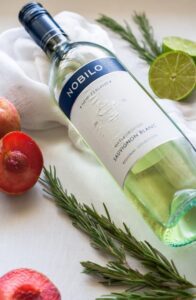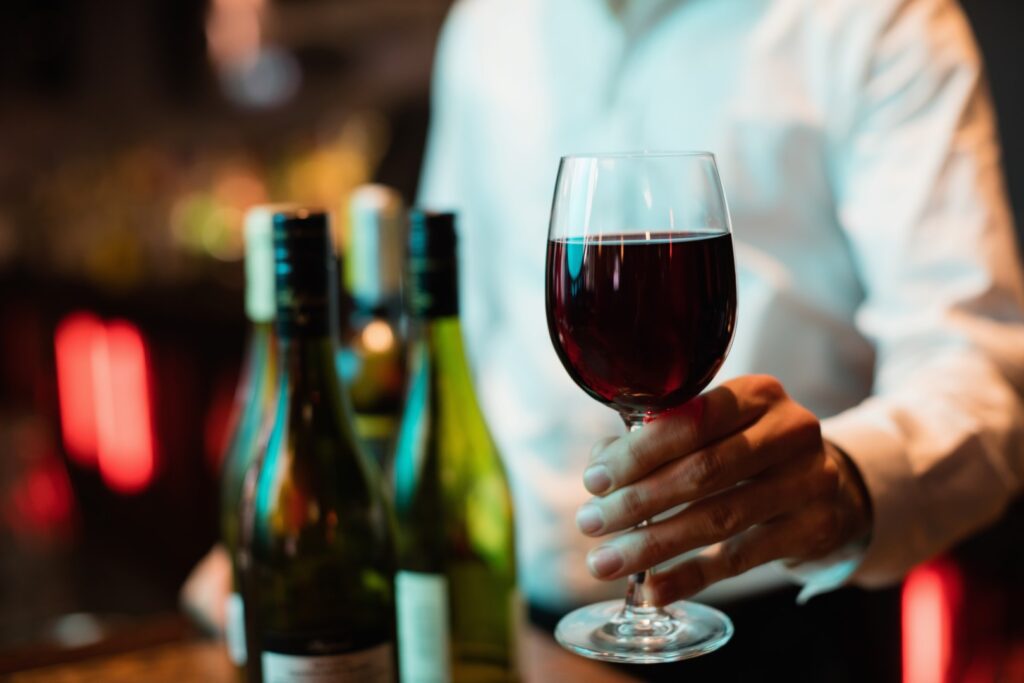Wines come in many different styles and tastes. Prior to each ingathering, winemakers have to decide which path they are going to take in order to produce their favored drink. Apart from different colors, some wines are sweet and others are dry. By the way, the sweetness of a wine is not regulated by the variety of grapes but rather by the way it is produced. For example, leaving some residual sugar will make the wine sweeter. Likewise, any type of grape can be turned into a wine that is dry.
If you are a novice to the world of wines, you might find the wide choice of wine varieties available confusing. Among the literally hundreds of wines on the shelves, how do you determine what is what and which wine to choose?
Simply speaking, wine is the fermented juice of a wine grape. A wine grape is very different from your grocery store-variety grape: it has many seeds and is small, sweet, and thick-skinned. There are two kinds of grapes wine is made from: white grapes (which are actually light green-colored) and black grapes (which are actually dark red-colored).
Within those types of grapes, there are hundreds of varieties used to make thousands of wine varietals and blends. Besides grapes used, many other factors affect a wine’s character, like the wine region, tannins, sweetness, acidity, body, and flavors, but we will not get into the complexities of all that right now.
To keep it simple, in this post I want to give you a basic overview of the various styles of wines, so next time you are in the wine aisle, you know what you want.
From a broader perspective there are eleven main styles of wine, arising from a number of different production techniques. They are placed into distinct styles according to their body, color, and other attributes. The list comprises all red, white, rosé, sparkling, dessert, and fortified wines. You can use this classification to help you approach ordering or purchasing wine to either pair with your food or to enjoy on its own.
RED WINES
Red wines are made from black grapes fermented with the grape skins (which is what lends the wine its red color), seeds, and stems. Red wine is rich in tannins, which produce that bitter, dry taste in your mouth after you take a sip.
Full-Bodied Red Wines (Cabernet Sauvignon, Petite Sirah, Syrah, Douro Reds, Zinfandel, Tannat, Sagrantino etc.)

Full bodied red wines are richer in tannins, which can be felt at the back of your tongue. They emanate from grape skins and seeds plus from the wine being stored in new wood barrels. Most full-bodied Red Wines offer an aroma that reminds you of different spices, leather, and dark fruits, such as sour cherries.
They are powerful wines overall, and should be paired with strong food items, such as beef and lamb. It is best to drink red wines at, or slightly below, room temperature because when you chill red wine, the tannins it contains become bitter. The darker or newer the wine, the more tannins it has. Go for an older wine, which will taste less dry and bitter.
You had better serve them in large-bowled glasses to fully depict their aromas and flavors. Often, during the production of full-bodied wines, the winemakers leave some residual sugar inside, by stopping the fermentation early. Another element adding to the fullness of a wine’s body is the warmth of the climate where it has been made. Higher temperatures help the development of sweeter grapes, that yield a higher alcohol content and a fuller body.
Medium-Bodied Red Wines (Merlot, Barbera, Cabernet Franc, Sangiovese, Shiraz, Nebbiolo, Tempranilo, Mourvedre etc.)
Medium-bodied red wines are often a balanced choice that can accompany most foods. They are also a compromise choice – those who are not fond of full-bodied wines can pair them with heavier foods and those who are not fond of light-bodied wines can pair them with lighter foods.
Characteristically a medium-bodied red wine offers moderate acidity, a medium amount of tannin, and a largely fruity aroma resembling red fruits. The richness of its body is influenced by fermentation, climate, and ageing in oak barrels.
Light-Bodied Red Wines (Pinot Noir, Gamay, Freisa, Brachetto, Ciliegiolo, Cinsault,, Schiava etc.)
Light-bodied red wines are made from brighter, thinner-skinned grapes and have the least tannins. They are the most sensitive and delicate tasting red variety, light in tannins, with bright acidity. They can be paired with many foods, such as cheese.
WHITE WINES
White wines are produced from both white grapes and black grapes. However, unlike red wines, white wines are not fermented with grape skins. Instead, the skins are separated so only the clear grape juice is produced.

White wine has little tannins; its acidic nature is what underlies its fresh, crisp, and tart flavors. White wine goes best with lighter dishes, such as poultry, fish and other seafood, curries, tacos, cheese, salad, popcorn, and chips. Chill white wine before drinking to elicit its flavors.
Full-Bodied White Wines (Oaked Chardonnay, Rhône Whites, Semillon, Chenin Blanc, Viognier, Muscat etc.)
These are typically wines that have experienced ageing in oak barrels and a second malolactic fermentation. Full-bodied white wines stand out through their distinct vanilla and coconut notes.
These wines pair well with rich, buttery foods like lobster, as well as risotto with asparagus, poultry, and assorted cheeses. They normally require to be aged for quite some time (3 to 10 years) and can be a bit costly.
Medium-Bodied White Wines (Unoaked Chardonnay, Chablis, Pinot Gris, Dry Riesling etc.)
They are best paired with seafood such as oysters, scallops, sashimi, or salads with mild vinaigrettes.
Light-Bodied White Wines (Sauvignon Blanc, Zelen, Pinela, Pinot Grigio, Pinot Bianco, Grenache Blanc, Muscadet, Orvieto etc.)

These are crisp dry wines, favored by those who relish a touch of sparkle on the tongue. These wines are highly drinkable; you will enjoy them the most in hot weather. It is best to drink them while they are still young, preferably in their first or second year.
Light-bodied white wines are not hard to find and are affordably priced. You are generally able to get a first-rate bottle for a very reasonable price.
They pair well with seafood, salads, grilled white meat fishes, sushi, and Mexican food. Light white wines also make refreshing sangrias.
Aromatic White Wines (Albariño, Loureiro, Gewürztraminer, Riesling, Vidal Blanc, Müller-Thurgau, Torrontés, Cserszegi Füszeres etc.)
Aromatic white wines are characterized by intense fruit, floral, or spice aromas. The pronounced aromas they contain come from a higher than normal concentration of an aroma compound class known as terpenes. A lot of the joy in drinking aromatic wines is to smell their rich aromas. If you stop to smell flowers, you will love aromatic white wines.
Aromatic wines are typically made in a light and uplifting style, with least intervention in order to best showcase the intense natural aromas found in each variety. Although different varieties share a common aromatic strength; the acidity, flavor and sweetness levels differ from grape to grape. Many of the most significant aromatic white varieties are made in both dry and sweet styles.
Aromatic white wines can be served chilled. Better quality wines can be served somewhat warmer and, as a result, will release more aromas. When matched well with food, aromatic wines are wonderful to use as a kind of flavor multiplier, more like an ingredient or embellishment to a dish. They are best paired with Southeast Asian and Indian cuisine. Bear in mind that, while aromatic wines have strong aromas, their taste is usually subdued, so pair them with lighter meats, poultry or seafood.
OTHER WINES
These include wine categories other than red and white wines.
 Rosé Wines (Grenache, Sangiovese, Mourvedre etc.)
Rosé Wines (Grenache, Sangiovese, Mourvedre etc.)
Rosé is a wine identified by its blush or pink color. This cute color is generated when the juice of black grapes is fermented with the skins for a very short period of time, until the juice changes color. This maceration can take from a few hours to a few days.
Similar to white wine, it is also low in tannins, though some rosés are dry. Rosé is a popular drink for get-togethers, especially for summertime parties, and a good option as a starter wine because of its light, sweet flavor. It is better if you serve it chilled to enhance its delightful fruity flavor.
Rosé pairs well with light dishes and snacks, including poultry, fish, fruit, chips and salsa, and cheese. It also pairs well with spicier foods, such as Thai or Mexican.
Sparkling Wines (Champagne, Cava, Asti, Prosecco, Methode Classique, Penina, Sekt Lmarusco etc.)
Sparkling wines are carbonated wines. Sparkling wines are made by the traditional method from black and white grapes, and the bubbles in sparkling wine are a consequence of secondary fermentation in a bottle or a steel tank. Champagne is the most renowned and prestigious variety of sparkling, which is often drunk on festive occasions like New Year and weddings. It is named after the province of Champagne in France.
Sparkling wines vary in style from ultra-dry (brut) to quite sweet (doux) and super bubbly to slightly fizzy, with a full range of flavors and aromas that span the scale from floral to fruit-filled and fresh-baked bread to creamy buttery tones.

Sparkling wines are best drunk with light foods, such as soft cheeses, seafood, including smoked salmon and shrimp, salad, fresh fruit, and popcorn. It is always served in tall, slender glasses because these types of glasses help preserve the temperature and the bubbles of sparkling wine.
Things get a little ambiguous in the next two types of wines; this is because the lines tend to blur on the distinction between a dessert wine and a fortified wine. You will frequently find dessert wines and fortified wines clustered together, and the names sometimes used interchangeably. But it is worth mentioning that both types of wine have their own distinctive characteristics and we will mention them as separate styles of wine.
Dessert Wines (Tokaji, Constantia, Sauternes, Vin Santo, Passito, Strohwein, Vin de Paille, Ice Wine etc.)
As the name indicates, dessert wines are very sweet wines that are drunk after a meal with or as dessert.
Fortified Wines (Port, Sherry, Madeira, Vin Doux Naturel, Marsla, Banyul, Commandaria Wine, Vermouth, Rutherglen Muscat etc.)
Fortified wines are wines with spirits like brandy added in the fermentation process. They have a higher alcohol content than other wines.
Famous winemaker and expert Alexis Lichine says, “When it comes to wine, I tell people to throw away the vintage charts and invest in a corkscrew. The best way to learn about wine is the drinking.” So now that we have described your basic categories of wines, follow Lichine’s counsel, get yourself a corkscrew and introduce yourself to the world of wines – exploring and savoring different wines over time.
Enjoy!



 Rosé Wines (Grenache, Sangiovese, Mourvedre etc.)
Rosé Wines (Grenache, Sangiovese, Mourvedre etc.)
Thanks for the tips about credit repair on all of this web-site. Some tips i would tell people is to give up the mentality that they can buy today and pay later. As being a society most people tend to repeat this for many factors. This includes vacations, furniture, and items we would like. However, you must separate your current wants out of the needs. When you are working to fix your credit score make some trade-offs. For example you can shop online to economize or you can turn to second hand shops instead of pricey department stores intended for clothing.
I know this if off topic but I’m looking into starting my
own weblog and was wondering what all is needed to get set up?
I’m assuming having a blog like yours would cost a pretty penny?
I’m not very web savvy so I’m not 100% sure. Any suggestions or advice would be greatly appreciated.
Kudos
Just desire to say your article is as astonishing. The clarity to your post is simply cool and that i can think you’re an expert on this subject.
Fine along with your permission allow me to grab your RSS feed to stay updated with forthcoming post.
Thank you 1,000,000 and please keep up the enjoyable
work.
Hey there! Someone in my Facebook group shared this site with us so I
came to check it out. I’m definitely enjoying the information. I’m
book-marking and will be tweeting this to my followers!
Wonderful blog and superb design.
Nice answers in return of this query with genuine
arguments and describing everything on the topic of that.
are non street thc vapes ssfe
Thank you for the auspicious writeup. It actually used to be
a enjoyment account it. Glance advanced to more delivered
agreeable from you! However, how could we keep in touch?
Can you tell us more about this? I’d like to find out some
additional information.
Thank you for the good writeup. It if truth be told was a amusement account
it. Glance complicated to far brought agreeable from you! By
the way, how can we be in contact?
I loved as much as you’ll receive carried out right here. The sketch is tasteful, your authored
material stylish. nonetheless, you command get got an edginess over that you wish be delivering the following.
unwell unquestionably come more formerly again since exactly
the same nearly a lot often inside case you shield this hike.
Wow, superb weblog structure! How lengthy have you ever been running a blog for?
you made blogging look easy. The overall look of your web site is
great, let alone the content!